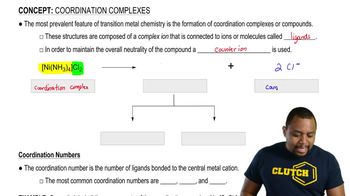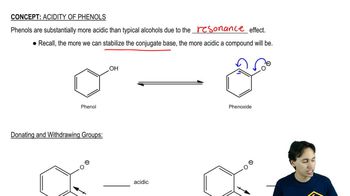Predict the products formed when m-cresol (m-methylphenol) reacts with
(c) bromine in CCl4 in the dark
 Verified step by step guidance
Verified step by step guidance Verified video answer for a similar problem:
Verified video answer for a similar problem:



 4:29m
4:29mMaster Activity and Directing Effects with a bite sized video explanation from Johnny
Start learning